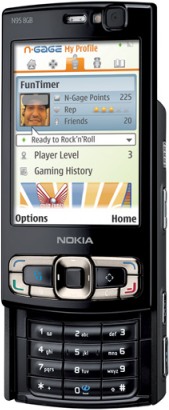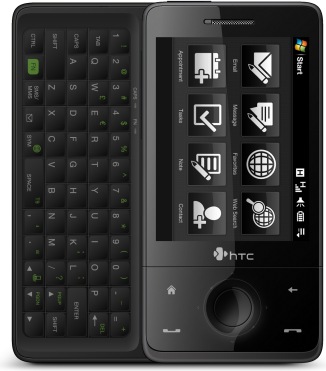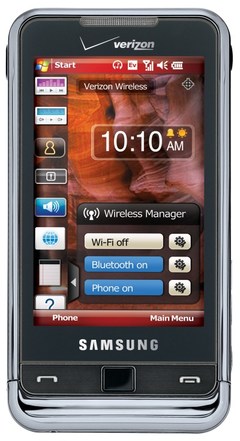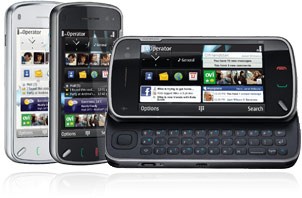If you would like to add more datasheets to the comparison table you can still find and add them around the site while browsing, querying or searching Device Specs. Meanwhile you will not lose the comparison table below. Furthermore unnecassary datasheets can be removed by clicking on the "Remove from comparison" buttons (ever more than one item during one page load) but in this case reloading the table will be needed. Then click again on the appropriate header "Compare" button.
|
|
| | | | |
|
Use the following link to refer to this comparison |

| 
| 
| 
| 
|
|
Remove all |
|  Add to compare Add to compare | |  Add to compare Add to compare | |  Add to compare Add to compare | |  Add to compare Add to compare | |  Add to compare Add to compare |
 Introduction Introduction |
Brief |
|
|
Second generation iPhone with 3.6 Mbps 3G data link and 8 GB on-board flash memory for the global market |
|
|
Released |
2007 Oct |
2008 Aug 12 |
2008 Jul 11 |
2008 Nov 26 |
2009 Jun 19 |
Announced |
|
|
2008 Jun 9 |
|
|
Hardware Designer |
Nokia |
HTC |
Apple |
Samsung Electronics |
Nokia |
Manufacturer |
Nokia |
HTC |
Foxconn |
Samsung Electronics |
Nokia |
OEM ID |
RM-320 |
RAPH100 |
n82ap |
|
RM-505 |
General Extras |
No |
No |
Haptic touch feedback |
No |
No |
Device Category |
Smartphone |
Smartphone |
Smartphone |
Smartphone |
Smartphone |
 Physical Attributes Physical Attributes |
Width |
53 mm |
51 mm |
62.1 mm |
56.9 mm |
55.3 mm |
Height |
99 mm |
102 mm |
115.5 mm |
112 mm |
117.2 mm |
Depth |
21 mm |
18.05 mm |
12.3 mm |
13.1 mm |
18.25 mm |
| Dimensions
| 2.09x3.90x0.83 inches |
2.01x4.02x0.71 inches |
2.44x4.55x0.48 inches |
2.24x4.41x0.52 inches |
2.18x4.61x0.72 inches |
Mass |
128 g |
165 g |
133 g |
123 g |
150 g |
|
4.52 ounces |
5.82 ounces |
4.69 ounces |
4.34 ounces |
5.29 ounces |
 Software Environment Software Environment |
Platform |
Symbian |
Windows (mobile-class) |
iOS / iPadOS |
Windows (mobile-class) |
Symbian |
Operating System |
Symbian OS 9.2 Series 60 3rd Edition |
Microsoft Windows Mobile 6.1 Professional |
Apple iPhone OS 2.0 |
Microsoft Windows Mobile 6.1 Professional |
Symbian OS 9.4 Series 60 5th Edition (Symbian^1) (S^1) |
|
Feature Pack 1 |
AKU 1.2.3 |
|
|
|
Software Extras |
No |
Business card recognition |
No |
No |
Navigation software |
 Application processor, Chipset Application processor, Chipset |
CPU Clock |
332 MHz |
528 MHz |
412 MHz |
|
434 MHz |
CPU |
Texas Instruments OMAP 2420, 2005, 32 bit, single-core, 32 Kbyte I-Cache, 32 Kbyte D-Cache, 90 nm, IMG PowerVR MBX GPU |
Qualcomm MSM7201A, 2008, 32 bit, single-core, 65 nm, Qualcomm Adreno 130 GPU |
Samsung S5L8900, 2007, 32 bit, single-core, 16 Kbyte I-Cache, 16 Kbyte D-Cache, 90 nm, IMG PowerVR MBX Lite GPU |
Marvell PXA312 (Monahans LV), 2007, 32 bit, single-core |
ARM 1136JF-S, 2002, 32 bit, single-core, 16 Kbyte I-Cache, 16 Kbyte D-Cache |
 Operative Memory Operative Memory |
RAM Type |
SDRAM |
LPDDR SDRAM |
SDRAM |
LPDDR SDRAM |
SDRAM |
|
|
|
103 MHz |
|
|
RAM Capacity (converted) |
128 MiB RAM |
288 MiB RAM |
128 MiB RAM |
128 MiB RAM |
128 MiB RAM |
|
90 MiB user accessible RAM |
200.99 MiB user accessible RAM |
|
96.26 MiB user accessible RAM |
|
 Non-volatile Memory Non-volatile Memory |
Non-volatile Memory Interface |
Yes |
NAND Flash Interface |
Yes |
Yes |
Yes |
Non-volatile Memory Capacity (converted) |
256 MiB ROM |
512 MiB ROM |
8 GB ROM |
256 MiB ROM |
256 MiB ROM |
Secondary Non-volatile Memory Capacity |
8 GB sec. ROM |
|
|
8.1 GB sec. ROM |
32 GB sec. ROM |
|
|
323.54 MiB total user storage |
6900 MiB total user storage |
|
|
 Display Display |
Display Diagonal |
72 mm |
70 mm |
89.9 mm |
81 mm |
89 mm |
|
2.8 inch |
2.8 inch |
3.5 inch |
3.2 inch |
3.5 inch |
Resolution |
240x320 |
480x640 |
320x480 |
400x240 |
360x640 |
Horizontal Full Bezel Width |
9.8 mm |
9 mm |
12.23 mm |
|
11.67 mm |
Display Area Utilization |
47.4% |
45.2% |
52.0% |
45.4% |
52.2% |
Pixel Density |
141 PPI |
290 PPI |
163 PPI |
146 PPI |
210 PPI |
Display Type |
Color TN-TFT LCD display |
Color TN-TFT LCD display |
Color TN-TFT LCD display |
Color TN-TFT LCD display |
Color TN-TFT LCD display |
Number of Display Scales |
16.8M |
65536 |
262144 |
262144 |
16.8M |
Scratch Resistant Screen |
No |
No |
Yes |
No |
No |
 Graphical Subsystem Graphical Subsystem |
Graphical Controller |
PowerVR MBX |
Qualcomm Adreno 130 |
PowerVR MBX Lite |
|
|
 Audio/Video Interfaces Audio/Video Interfaces |
A/V Out |
Yes |
Yes |
No |
Yes |
Yes |
|
Proprietary |
Proprietary |
No |
Proprietary |
Proprietary |
 Audio Subsystem Audio Subsystem |
| Audio Controller
| |
|
Wolfson WM6180C |
|
|
Microphone(s) |
mono |
mono |
mono |
mono |
stereo |
| Loudspeaker(s) |
stereo |
mono |
mono |
mono |
stereo |
| Audio Output |
3.5mm |
Proprietary |
3.5mm |
Proprietary |
3.5mm |
 Cellular Phone Cellular Phone |
Supported Cellular Bands |
GSM850,
GSM900,
GSM1800,
GSM1900,
UMTS2100 (B1) bands |
GSM850,
GSM900,
GSM1800,
GSM1900,
UMTS2100 (B1),
UMTS900 (B8) bands |
GSM850,
GSM900,
GSM1800,
GSM1900,
UMTS2100 (B1),
UMTS1900 (B2),
UMTS850 (B5) bands |
CDMA800 (BC0),
CDMA1900 (BC1/BC14) bands |
GSM850,
GSM900,
GSM1800,
GSM1900,
UMTS2100 (B1),
UMTS1900 (B2),
UMTS900 (B8) bands |
Supported Cellular Data Links |
CSD,
HSCSD,
GPRS,
GPRS MSC32,
EDGE,
EDGE MSC32,
UMTS,
HSDPA data links |
CSD,
GPRS,
GPRS C12,
EDGE,
UMTS,
HSUPA,
HSUPA 2.0,
HSDPA,
HSDPA 7.2 data links |
CSD,
GPRS,
GPRS C10,
EDGE,
UMTS,
HSDPA,
HSDPA 1.8,
HSDPA 3.6 data links |
cdmaOne,
CDMA2000 1x,
CDMA2000 1xEV-DO,
CDMA2000 1xEV-DO Rev A data links |
CSD,
HSCSD,
GPRS,
GPRS MSC32,
EDGE,
UMTS,
HSDPA,
HSDPA 3.6 data links |
SIM Card Slot |
Mini-SIM (2FF) |
Mini-SIM (2FF) |
Mini-SIM (2FF) |
No |
Mini-SIM (2FF) |
Complementary Phone Services |
Voice transmission,
Voice speaker,
Vibrate,
Speakerphone |
Voice transmission,
Voice speaker,
Vibrate,
Speakerphone |
Voice transmission,
Voice speaker,
Vibrate,
Speakerphone |
Voice transmission,
Voice speaker,
Vibrate,
Speakerphone |
Voice transmission,
Voice speaker,
Vibrate,
Speakerphone,
ANC |
SAR (head) |
|
0.462 W/kg |
|
1.310 W/kg |
0.525 W/kg |
SAR (body) |
|
1.310 W/kg |
|
1.110 W/kg |
0.400 W/kg |
 Secondary Cellular Phone Secondary Cellular Phone |
 Control Peripherals Control Peripherals |
Touchscreen Type |
No |
Resistive screen |
Capacitive multi-touch screen |
Resistive screen |
Resistive screen |
Touch Surface Type |
No |
No |
No |
Resistive surface |
No |
Keyboard |
Slide-out numeric |
Slide-out QWERTY |
No |
No |
Slide-out/tilt QWERTY |
| Number of keys
| 12 |
57 |
|
|
32 |
Directional Pad |
5-way |
5-way |
No |
No |
5-way |
 Communication Interfaces Communication Interfaces |
Expansion Interfaces |
No |
SDIO,
TransFlash,
microSD,
microSDHC |
No |
SDIO,
TransFlash,
microSD,
microSDHC |
TransFlash,
microSD,
microSDHC |
USB |
USB 2.0 |
USB 2.0 |
USB 2.0 |
USB 2.0 |
USB 2.0 |
|
USB FS (12 Mbps) |
USB HS (480 Mbps) |
USB HS (480 Mbps) |
USB HS (480 Mbps) |
USB HS (480 Mbps) |
| USB Services
| USB charging |
USB charging |
USB charging |
USB charging |
USB charging |
| USB Connector
| USB Mini-B (mini-USB) |
USB Mini-B (mini-USB) |
Proprietary |
Proprietary |
USB Micro-B (Micro-USB) |
Bluetooth |
Bluetooth 2.0 |
Bluetooth 2.0 + EDR |
Bluetooth 2.0 + EDR |
Bluetooth 2.0 + EDR |
Bluetooth 2.0 + EDR |
Wireless LAN |
802.11b,
802.11g |
802.11b,
802.11g |
802.11b,
802.11g |
802.11b,
802.11g |
802.11b,
802.11g |
IR |
IrDA 1.2 |
No |
No |
No |
No |
|
115200bit/s (SIR/CIR) |
No |
No |
No |
No |
 Multimedia Broadcast Multimedia Broadcast |
FM Radio Receiver |
FM radio (76-108 MHz) |
FM radio (88-108 MHz) with RDS |
No |
FM radio (88-108 MHz) with RDS |
FM radio (88-108 MHz) with RDS |
| FM Radio Transmitter |
No |
No |
No |
No |
FM radio (88-108 MHz) |
 Satellite Navigation Satellite Navigation |
Complementary Satellite Services |
A-GPS |
A-GPS,
QuickGPS |
A-GPS,
Geotagging |
A-GPS,
Geotagging |
A-GPS |
 Primary Camera System Primary Camera System |
Camera Placement |
Rear |
Rear |
Rear |
Rear |
Rear |
Camera Image Sensor |
CMOS |
CMOS |
CMOS |
CMOS |
CMOS |
Number of effective pixels |
5.0 MP camera |
3.1 MP camera |
1.9 MP camera |
4.9 MP camera |
5.0 MP camera |
Zoom |
|
1.0 x optical zoom |
1.0 x optical zoom |
1.0 x optical zoom |
1.0 x optical zoom |
Focus |
CD AF |
CD AF |
No |
CD AF |
CD AF |
Video Recording |
640x480 pixel |
352x288 pixel |
|
640x480 pixel |
640x480 pixel |
|
30 fps |
30 fps |
|
15 fps |
30 fps |
Flash |
single LED |
single LED |
No |
single LED |
dual LED |
Camera Extra Functions |
No |
No |
No |
Macro mode |
Macro mode |
 Secondary Camera System Secondary Camera System |
Secondary Camera Placement |
Front |
Front |
No |
No |
Front |
Secondary Camera Sensor |
CMOS |
CMOS |
No |
No |
CMOS |
Secondary Camera Number of pixels |
0.1 MP sec. cam |
0.3 MP sec. cam |
|
|
|
Secondary Video Recording |
176x144 pixel |
352x288 pixel |
|
|
176x144 pixel |
|
15 fps |
|
|
|
15 fps |
 Built-in Sensors Built-in Sensors |
Built-in accelerometer |
Yes |
Yes |
3D accelerometer |
Yes |
Yes |
Additional sensors |
No |
No |
P sensor |
No |
No |
 Ingress Protection Ingress Protection |
Protection from solid materials |
Yes |
Yes |
Yes |
Yes |
Yes |
Protection from liquids |
Yes |
Yes |
Yes |
Yes |
Yes |
 Power Supply Power Supply |
Battery |
Li-ion |
Li-ion |
Li-ion |
Li-ion |
Li-ion |
|
removable |
removable |
built-in |
removable |
removable |
|
1-cell |
1-cell |
1-cell |
1-cell |
1-cell |
Nominal Battery Voltage |
|
|
3.70 Volts |
|
|
Nominal Battery Capacity |
1200 mAh battery |
1340 mAh battery |
1150 mAh battery |
1440 mAh battery |
1500 mAh battery |
Nominal Battery Energy |
|
|
4.26 Wh |
|
|
Estimated Battery Life |
13.0 hours |
10.0 hours |
10.0 hours |
|
12.0 hours |
 Geographical Attributes Geographical Attributes |
Market Countries |
No |
No |
Australia,
Austria,
Belgium,
Denmark,
France,
Germany,
HK,
Ireland,
Italy,
Japan,
Netherlands,
Portugal,
Singapore,
Spain,
Sweden,
Switzerland,
Taiwan,
UK,
USA |
USA |
No |
Market Regions |
Europe,
Western Europe |
No |
Asia,
Australia,
Europe,
North America,
Southeast Asia,
Western Europe |
No |
No |
Mobile Operator |
|
|
|
|
|
Price |
|
|
599 |
|
|
|
No |
No |
USD |
No |
No |
 Datasheet Attributes Datasheet Attributes |
Data Integrity |
Final |
Final |
Final |
Final |
Final |
Added |
2007-11-26 15:51 |
2008-04-27 22:31 |
2008-06-10 15:27 |
2008-09-05 09:39 |
2008-12-03 11:16 |